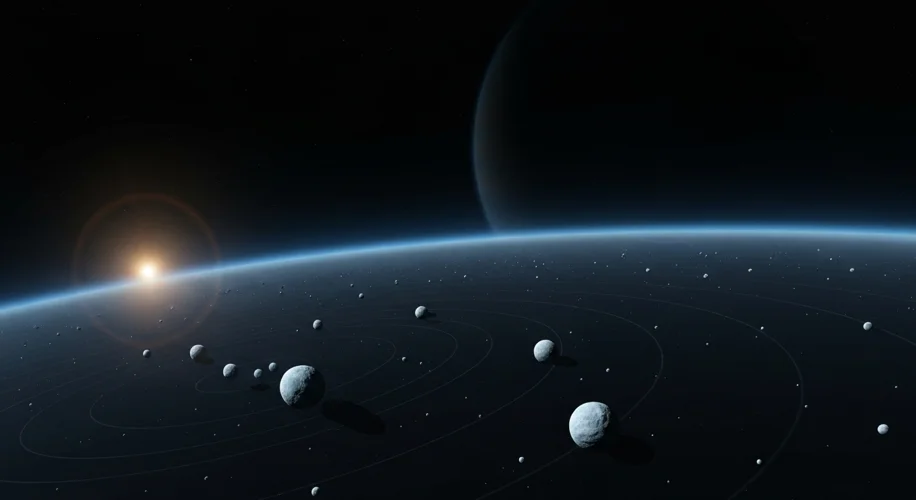We know our solar system has eight planets: Mercury, Venus, Earth, Mars, Jupiter, Saturn, Uranus, and Neptune. But what if I told you there might be a ninth one, hiding in the distant, icy realm of the Kuiper Belt?
Today is September 17, 2025, and the idea of a hidden planet isn’t just science fiction anymore. Scientists have been observing the strange orbital patterns of several small, icy bodies way out past Neptune. These objects, often called Trans-Neptunian Objects (TNOs), seem to be clustered together in a way that suggests something massive is tugging on them gravitationally.
Think of it like this: imagine you’re watching a group of marbles roll around a large, invisible ball. You can see the marbles clustering and moving in peculiar ways, and you’d infer that the invisible ball must be there, influencing their paths. That’s essentially what astronomers are seeing with these distant TNOs.
This isn’t the first time scientists have used the peculiar behavior of celestial bodies to predict the existence of a new planet. Back in the 19th century, Uranus’s orbit wasn’t behaving as expected. Astronomers suspected another planet was out there, and eventually, Neptune was discovered precisely where their calculations predicted it would be.
Now, the focus is on the Kuiper Belt, a vast region of icy bodies that stretches far beyond Neptune. This region is home to Pluto and thousands of other smaller objects. The latest clues come from the orbits of several TNOs, which seem to be tilted and clustered in a way that can’t easily be explained by the gravitational pull of the known planets.
Computer models, something I’m very familiar with from my own research in atmospheric science, are crucial here. Scientists create simulations, plugging in the known masses and locations of planets and other objects, to see if they can replicate the observed TNO orbits. When those models don’t quite match reality, it signals that a piece of the puzzle might be missing.
So, what would this potential Planet Nine be like? Based on the calculations, it’s estimated to be about 5 to 10 times the mass of Earth. It would be a gas or ice giant, similar to Uranus and Neptune, but much farther away. Because it’s so distant, it would take this hypothetical planet anywhere from 10,000 to 20,000 Earth years to complete just one orbit around the Sun.
Observing such a distant and dim object presents enormous challenges. It would be incredibly faint, making it very hard to spot with even our most powerful telescopes. It’s a bit like trying to find a single firefly in a completely dark stadium, but astronomers are using sophisticated techniques and dedicated surveys to search for it.
The implications of finding a ninth planet would be huge. It would dramatically shape our understanding of how our solar system formed and evolved. It could help explain why the orbits of Uranus and Neptune are tilted the way they are, and it would add a significant new member to our cosmic family.
While we haven’t definitively found Planet Nine yet, the scientific process is in full swing. It’s a thrilling time for astronomy, showcasing how persistent observation, careful analysis, and sophisticated modeling can lead us to discover the unseen wonders of our universe.

